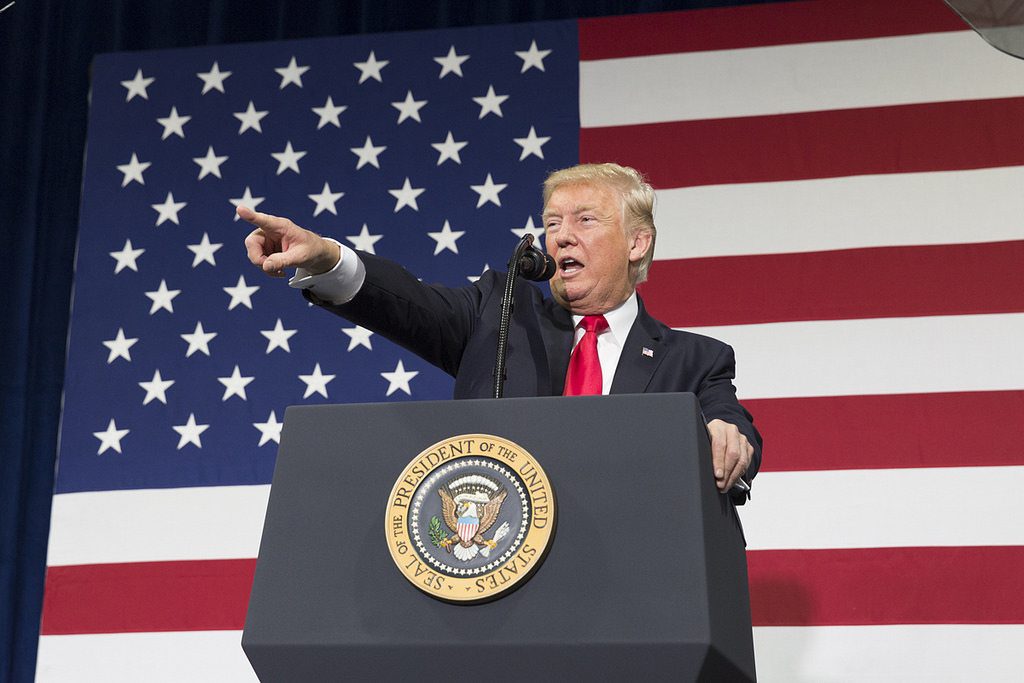Trump Slump Fears Are Realized as Revised Findings Show Tourism Drop

Skift Take
After several months of wondering — and what turned out to be some misplaced optimism — the United States is discovering a not-so-rosy picture for international inbound tourism in 2017.
The U.S. Travel Association on Tuesday revised earlier upbeat travel numbers to present a “substantially more pessimistic assessment” of travel to the U.S., warning of “major storm clouds for the inbound international travel market.”
The organization debuted a Travel Trends Index (TTI) calculated by Oxford Economics last year, with the goal of anticipating future changes in travel demand and tracking travel growth over time. Throughout 2017, it has shown strength in both international inbound travel and domestic business travel that was a bit unexpected given the political situation in the U.S.
With the revised results out Tuesday, U.S. Travel said international visitation actually contracted in four of the first seven months of the year, with February (down 6.8 percent) and March (down 8.2 percent) for the weakest months of the year. That contradicted its own earlier reports that showed international numbers growing consistently.
The revised index incorporates fresh data from the International Air Transport Association, air travel intelligence company OAG, Sabre, and the U.S. Department of Commerce.
“We kept projecting drops in international visitation, and they kept not materializing,” David Huether, U.S. Travel’s senior vice president of research, said in a statement. “However, we recently were able to access new data inputs for the TTI to give us an even more comprehensive picture, and sure enough, the international travel segment has been far weaker than what was initially shown.”
Travel demand slowed in July, according to the updated index. Domestic business travel declined in July after increasing in May and June, but an uptick over the next several months is expected. Looking forward, the association expects total travel volume in the U.S. to grow at a rate of 1.2 percent through January. Domestic travel is forecast to be up 1.6 percent.
Numbers from the U.S. Department of Commerce show that through March 2017, total overseas travel to the U.S. has declined by 7.8 percent compared to 2016. Including Mexico and Canada, total international travel has dropped 4.2 percent. Here are the most recent data available from the Commerce Department.
FIRST QUARTER 2017 INTERNATIONAL VISITATION TO THE U.S.
| MONTH/QUARTER | TOTAL ARRIVALS | CANADA | MEXICO | TOTAL OVERSEAS * | EUROPE | |||||
|---|---|---|---|---|---|---|---|---|---|---|
| COUNT | % CHANGE | COUNT | % CHANGE | COUNT | % CHANGE | COUNT | % CHANGE | COUNT | % CHANGE | |
| JANUARY | 5,603,768 | 1.7 | 1,475,040 | 8.7 | 1,543,208 | 2.4 | 2,585,520 | -2.3 | 770,221 | -4.8 |
| FEBRUARY | 4,581,185 | -5.8 | 1,290,766 | 4.9 | 1,129,021 | -8 | 2,161,398 | -10.2 | 826,863 | -7.5 |
| MARCH (Revised) | 5,651,637 | -8.3 | 1,844,396 | 2.6 | 1,228,661 | -16.2 | 2,578,580 | -11 | 1,045,273 | -15.5 |
| 1ST QUARTER | 15,836,590 | -4.2 | 4,610,202 | 5.1 | 3,900,890 | -7.1 | 7,325,498 | -7.8 | 2,642,357 | -10.1 |
* Overseas travel includes all countries but Canada and Mexico.
International travel to the U.S. also dropped in 2016, by 2.4 percent.
For the next six months, U.S. Travel expects growth to be led by domestic travel, though leisure travel growth is forecast to slow. Destinations have said they feared that international visitors — already potentially discouraged because of the strong dollar — would be turned off by an unwelcoming stance from President Donald Trump and his administration. The Global Business Travel Association in May projected a $1.3 billion loss in overall travel-related spending this year in the United States just from Europe and the Middle East.
In a statement Tuesday, U.S. Travel Association president and CEO Roger Dow urged the administration to protect policies that facilitate international travel to the U.S. and to keep the Brand USA marketing program alive. President Trump’s proposed budget marked Brand USA for elimination.
“Upbeat consumer attitudes and solid labor market conditions continue to support the domestic travel market,” said Adam Sacks, president of Oxford Economics’ Tourism Economics group. “However, stagnant wages and the recalibration of expectations regarding the Trump administration’s campaign pledges pose risks to consumer and business sentiment. Additionally, the President’s continued rhetoric and policies weigh heavily on the international inbound market outlook.”
You can read the full report from U.S. Travel below.




